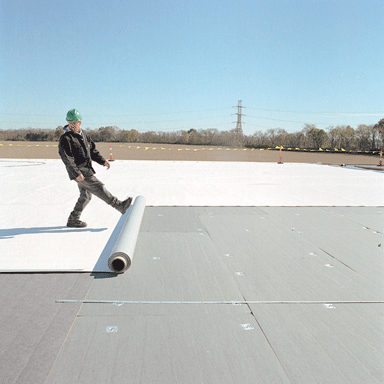
epdm roofing
EPDM roofing is the most common thermosetting (heat-softened) petroleum based roof material and been in use for approximately 40 years with arguably the longest average service life. Unlike plastic PVC/TPO product, EPDM is a synthetic rubber which may come with or without fiber reinforcing, ozone/heat/UV/weather resistant.


Non-reinforced membrane is the most commonly used for fully adhered systems. EPDM roofing is most commonly available in black (carbon black additive) or white (titanium dioxide additives) sheets.

The titanium-dioxide will reflect the UV rays and keep them from breaking down the materials polymers. It has considerable hail resistance, good flexibility in low temperatures, good heat/fire resistance, good resistance to wind damage, and good thermal shock durability. It can’t be heat-welded with seams being adhered with tape or liquid adhesive.

EPDM is arguably the most widely used material for low slope roofing and accounts for approximately 30-40% of the market. It comes in available sheet thicknesses of 45 or 60 mils and can be:



Fully Adhered

Mechanically Fastened


Ballasted
Because of rapidly improving technology in the application and associated equipment, fully adhered EPDM roofing has become the method of choice, especially for roof replacements. However, due to the taped or adhered seams vs heat-welding, they can breakdown sooner and will require some maintenance during their life. Roll widths can range anywhere between 7.5′ to 50′. Sheet thicknesses range from 45-90 mils. A 90 mil EPDM roof can last up to 30 years depending on sheet thickness and proper installation.
